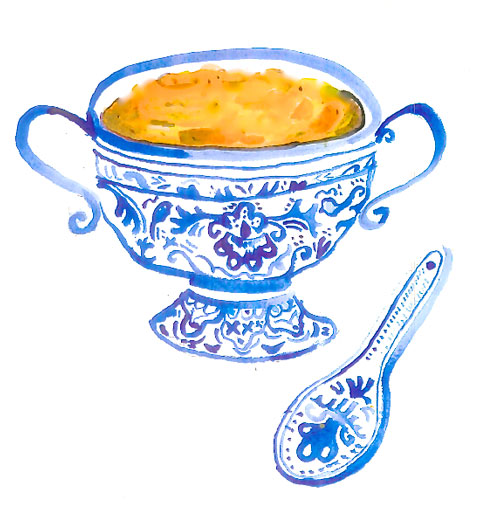
Illustration by Larsen McDowell
Everyday effortless entertaining is Victoria Amory’s mantra, one she’s put to good use as the author behind the Delicious! and Delicious Flavors cookbooks. But this Spanish native — who also contributed to Palm Beach Entertaining — provides more than just helpful how-tos; she’s also created a line of special sauces and condiments to easily elevate any dish. Here, she gives us her expert guide on one of our favorite culinary finishing touches — how to make it, the proper way to serve it and the lowdown between country vs. Dijon.
- It was probably the Romans who first created mustard, using the juice of unfermented grapes (mustum) and the spicy seeds of ground brassica to make “mustum ardens,” which over the years became: mustard. For centuries, it was used as a medicinal paste to cure the sting of scorpions, to relieve arthritis pain and to help toothaches.
- There are three different types of widely-used mustard seeds — and their spiciness varies with color. Yellow is mild in flavor and large in size, brown is small in size and has medium heat, and black is very small and very spicy.
- Mustard is super easy to make at home: the seeds are ground, infused with some liquid (wine, vinegar, water…), marinated for a few minutes or a few hours and that is it. Cold liquid makes it hot, warmer liquids make it milder.
- Mustard is the secret ingredient in many dishes and sauces, transforming them from everyday to extraordinary. It is delicious with most cheese-based recipes — like macaroni and cheese, soufflé, fondue and raclette — and widely served with meats, game and charcuterie. Country mustard (that is the one with seeds) is the perfect crust for salmon filet, while Dijon (the smooth one made with wine) is perfect to fold into dressings and sauces. Honey, sugar, vinegars, wine, bourbon, champagne, cognac and yes, even beer can go into a mustard pot.
- Serve mustard in a glass or ceramic bowl, never in silver or pewter, as its acidity will “eat” the metal. And use a wooden, horn or stainless steel spoon to scoop it out. At a buffet, serve two or three kinds of mustards of different heat levels for variation and flavor.
